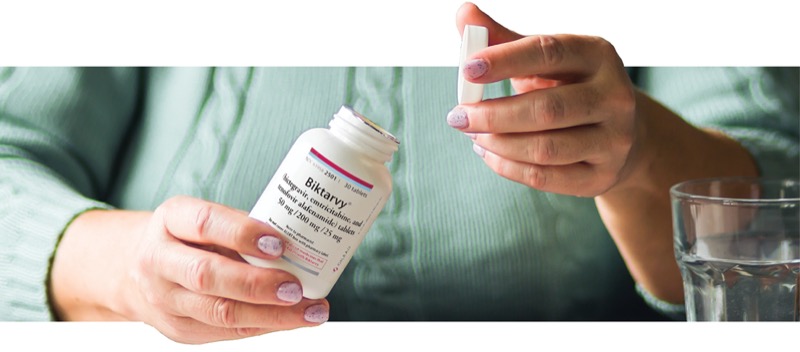Five-year follow-up data from the triple combination HIV therapy bictegravir-emtricitabine-tenofavir alafenamide (B/F/TAF; Biktarvy, Gilead) showed high rates of disease suppression and patient tolerance in adults older than 50 years, based on data from two studies presented at IDWeek 2024, in Los Angeles.
The number of people with HIV-1 who are older than 50 years is rising, but long-term treatment data for this group are limited, wrote Cissy M. Kityo, MD, of the Joint Clinical Research Centre, Kampala, Uganda, and colleagues, in their abstract.
The combination of B/F/TAF as first-line therapy for HIV has proven successful in many countries, and the single-pill dose is recommended for those initiating treatment, as well as those with undetectable viral loads after other treatments.
The researchers conducted a post hoc pooled analysis of data from two randomized, double-blind, multicenter, phase 3 studies. The study population included 55 adults 50 years and older and 538 adults who were younger than 50 who received B/F/TAF for up to five years. Baseline demographics were not significantly different between age groups.
After 240 weeks (approximately five years) of once-daily dosing, CD4 T-cell counts increased significantly from baseline in adults 50 and older and in those younger than 50, with a mean change of +291 and +347 cells/mcL, respectively; the increase was not significantly different between groups (P=0.07).
Treatment-emergent adverse events related to the drug occurred in 26% and 28% of the older and younger groups, respectively, during the study period. The number of patients who discontinued the drug because of adverse events was similar and low in the older and younger groups (4% and 1%, respectively).
Treatment adherence based on pill count through 240 weeks was high and similar between the younger and older groups, with 95% and 93%, respectively, achieving at least 85% adherence, the researchers noted. In addition, significantly more adults 50 and older had 95% or higher adherence compared with those younger than 50 (83% vs. 66%; P=0.0015).
Patients on B/F/TAF in both age groups maintained high rates of virologic suppression and showed similar changes in metabolic, renal and bone parameters, the researchers wrote. The current findings support B/F/TAF as a safe and effective long-term treatment for older adults with HIV-1, they concluded.
Low Toxicity Promotes High Adherence
The new study is important because the bictegravir regimen remains popular as a first-line medicine for patients with HIV, but they are increasingly older than 50 years and remain on the regimen for many years, Donna Sweet, MD, an infectious disease specialist and HIV expert at the University of Kansas Medical Center, Wichita, told Infectious Disease Special Edition.
The current study shows that B/F/TAF is safe and effective in older patients, she said. Of note, “adherence was high in the greater than 50-year-old group, and there was very little toxicity,” she added.
Dr. Sweet was not surprised by the study findings. “I use bictegravir in many patients older than 50 years, and they do very well,” she said. The single-tablet regimen is safe to use long term, and adherence is good, likely because of the minimal side effects, she said.
Although this study supports the use of B/F/TAF in older adults, the results were limited by the lack of data for patients 65 years and older, Dr. Sweet explained. Additional research is needed on the safety and effectiveness of the drug in these older patients, she said.
The study was funded by Gilead Sciences Inc., with medical writing support from Aspire Scientific supported by Gilead. Dr. Kityo reported grant/research support from Janssen Pharma and honoraria from Gilead Sciences and ViiV Healthcare. Dr. Sweet reported serving as an advisor to Gilead in the past, but not related to the current research.
{RELATED-HORIZONTAL}
